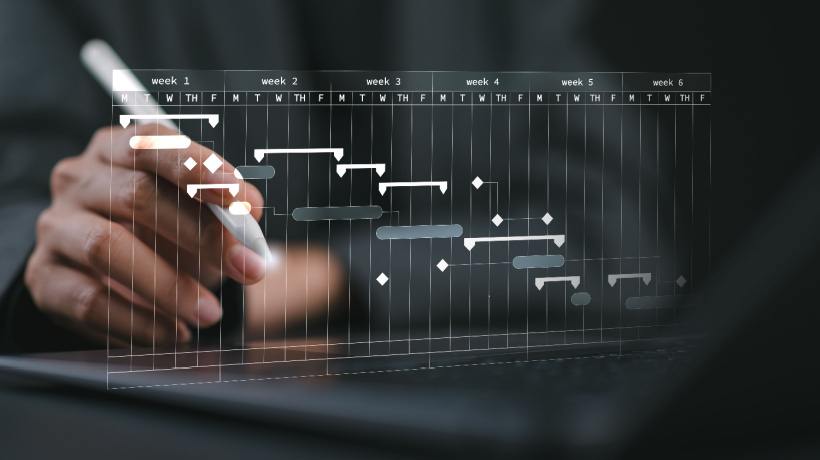Project Management Frameworks For Instructional Designers
In Instructional Design, project management is crucial in ensuring the successful development and implementation of learning experiences. As Instructional Designers navigate complex projects, they rely on project management frameworks to guide their processes and optimize outcomes. This article looks into three prominent project management frameworks: Waterfall, Agile, and hybrid. By exploring each approach's distinctive features, benefits, and challenges, Instructional Designers can make informed decisions and tailor their project management strategies to suit the specific needs of Instructional Design projects.
3 Instructional Design-Friendly Project Management Frameworks
1. Waterfall Project Management: Sequential Planning And Execution
Waterfall project management follows a sequential and linear approach, where each project phase flows downstream like a waterfall. This structured framework is characterized by well-defined stages that must be completed before moving on to the next.
- Requirements gathering and analysis
In the requirements gathering and analysis phase, Instructional Designers work closely with stakeholders to define project objectives, identify learner needs, and establish clear deliverables. This phase sets the foundation for the entire project by capturing essential requirements and aligning them with the Instructional Design goals. - Design and planning
The design and planning phase involves developing a comprehensive Instructional Design blueprint. Instructional Designers create detailed plans for content development, instructional strategies, media selection, and assessment methods. The emphasis is on thorough planning and documentation to guide subsequent phases. - Development and production
During the development and production phase, Instructional Designers execute the plans outlined in the previous phase. Content is created, multimedia elements are produced, and learning materials are assembled. This phase requires close attention to detail and adherence to the predetermined specifications. - Testing and quality assurance
The testing and quality assurance phase rigorously evaluate the instructional materials to ensure they meet the desired standards and objectives. Instructional Designers conduct systematic reviews, testing scenarios, and verification processes to identify defects or improvement areas. - Implementation and deployment
Once the instructional materials pass the testing and quality assurance phase, they are ready for implementation and deployment. Instructional Designers coordinate the delivery of the materials, whether through a Learning Management System, in-person training sessions, or other suitable channels. - Evaluation and maintenance
The evaluation and maintenance phase focuses on gathering feedback, assessing the effectiveness of the instructional materials, and making necessary adjustments. Instructional Designers analyze learner performance, gather stakeholder feedback, and refine the materials to ensure continuous improvement.
While the Waterfall approach provides structure and clarity, its linear nature can pose challenges when there is a need for flexibility, adaptability, or evolving requirements. As Instructional Design projects often involve changing circumstances and dynamic learner needs, alternative project management frameworks have emerged to address these challenges.
2. Agile Project Management: Flexibility And Iterative Development
In contrast to Waterfall, Agile project management embraces flexibility, collaboration, and iterative development. It originated in the software development industry but has found relevance in Instructional Design due to its adaptability to changing requirements and its focus on iterative refinement.
- Scrum methodology
Agile project management often incorporates the scrum methodology, which organizes work into short iterations called sprints. Sprints typically last two to four weeks, during which Instructional Designers collaborate closely with stakeholders to prioritize tasks and deliver incremental results. - Continuous feedback and adaptation
Agile project management emphasizes continuous feedback and adaptation. Instructional Designers engage stakeholders, including learners, Subject Matter Experts, and educators, throughout the development process to gather feedback, assess progress, and make iterative refinements. This allows for greater responsiveness to learner needs and ensures that the instructional materials remain relevant. - Cross-functional teams
Agile project management encourages forming cross-functional teams that combine diverse expertise. These teams consist of Instructional Designers, Subject Matter Experts, media specialists, and other relevant stakeholders who collaborate closely throughout the project. By leveraging the collective knowledge and skills of the team members, Instructional Designers can create comprehensive and well-rounded learning experiences. - Iterative development and delivery
One of the defining features of Agile project management is the iterative development and delivery of instructional materials. Rather than waiting until the end of the project to present a fully developed product, Instructional Designers deliver incremental versions of the materials throughout the project timeline. This allows for continuous validation, feedback, and refinement, ensuring that the final product meets the evolving needs of the learners. - Embracing change
Agile project management recognizes that change is inevitable and embraces it as an opportunity for improvement. As Instructional Designers gather feedback, assess outcomes, and receive new insights, they are open to adjusting their plans and incorporating changes into subsequent iterations. This flexibility enables Instructional Designers to adapt to emerging requirements, address challenges, and seize opportunities for innovation.
While Agile project management offers increased flexibility and responsiveness, it may require more collaboration, coordination, and communication among team members. The iterative nature of the approach also means that project timelines may be more fluid, requiring careful planning and management of resources.
3. Hybrid Project Management: Combining The Best Of Both Worlds
Recognizing the strengths and limitations of both Waterfall and Agile approaches, Instructional Designers have increasingly adopted hybrid project management frameworks. Hybrid approaches seek to balance structure and flexibility, combining elements from both Waterfall and Agile methodologies to suit the specific needs of Instructional Design projects.
- Tailored planning and phases
In a hybrid approach, Instructional Designers can customize the planning and execution phases based on the project's requirements. They can adopt a sequential approach for certain aspects of the project that benefit from a linear progression while incorporating Agile principles for other areas that demand greater adaptability. - Iterative refinement within phases
In a hybrid framework, Instructional Designers can introduce iterative refinement within the individual phases of the project. This allows for ongoing feedback, evaluation, and adjustment, ensuring that each phase evolves based on the insights gained during the development process. - Collaborative decision-making
Hybrid project management encourages collaborative decision-making processes. Instructional Designers work closely with stakeholders to gather input, align expectations, and make informed decisions throughout the project. By involving stakeholders in the decision-making process, Instructional Designers can ensure that the project meets their needs and expectations. - Flexible project control
In a hybrid approach, project control is more adaptable, allowing for adjustments based on feedback and changing circumstances. Instructional Designers have the autonomy to make informed decisions and modifications as necessary to ensure the project's success. - Emphasizing documentation and accountability
Hybrid project management recognizes the importance of documentation and accountability. Instructional Designers maintain clear documentation of project plans, milestones, and deliverables to ensure transparency and effective communication. This documentation is a stakeholder reference point and facilitates accountability throughout the project lifecycle.
By adopting a hybrid project management approach, Instructional Designers can leverage the benefits of both Waterfall and Agile methodologies while mitigating their limitations. The hybrid framework provides the flexibility to adapt to changing circumstances, accommodate evolving requirements, and deliver high-quality instructional materials.
Conclusion
In the dynamic field of Instructional Design, project management frameworks play a vital role in ensuring successful outcomes. The Waterfall approach offers structure and predictability, while Agile brings flexibility and iterative refinement. Hybrid project management combines the best of both worlds, tailoring the approach to suit the specific needs of Instructional Design projects. As Instructional Designers navigate the complexities of Instructional Design projects, it is essential to evaluate and select the most appropriate project management framework carefully. Each approach brings unique advantages and considerations.
By understanding these frameworks' distinctive features, benefits, and challenges, Instructional Designers can make informed decisions that align with project goals, stakeholder expectations, and the dynamic nature of the educational landscape. Through a commitment to embracing innovative approaches, Instructional Designers can position themselves as strategic leaders in the field, driving positive change and delivering exceptional learning experiences to diverse learners.









